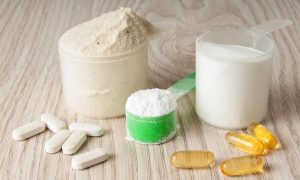What Are The Differences Between The Various Whey Protein Filtration Methods

|
|
If you happen to have shown any kind of interest in bodybuilding, or just general health and fitness for that matter, you’ll know right off the bat, that whey protein is, without question, the most popular sports supplement in the entire industry. That isn’t just a bogus claim, that is a claim which has been backed up by science and extensive research. You see, each year, whey protein sales alone, generate hundreds of millions in profit for various supplement companies, if not more, in fact. Because of this, the supplement industry is considered a very lucrative industry to be a part of, and it is why countless supplement companies are popping up sporadically, every single year. Whey protein for bodybuilders, is absolutely ideal, due to the fact that protein is vital for cellular function and health, as well as for the growth and the repair of muscle tissue. If you go to the gym and lift weights, chances are you yourself use a whey protein supplement, or you may at least happen to know somebody who does, but what you may not be aware of, is the fact that there are many different varieties of whey protein, which all comes down to exactly how the whey protein is processed. Here we’ll be taking a direct look at the main differences between each whey protein filtration method.
Whey protein concentrate

Whey protein concentrate is considered the cheapest form of whey protein, and for that reason, it is also the most common and popular form of whey protein supplement as well. This is actually the least processed of all whey proteins, though that doesn’t make it a write off, by any means. All this means is that it is rich in other non-protein ingredients, such as fat and lactose, due to the fact that it is derived from dairy milk. Typically, whey protein concentrates come in at around 80 – 85% protein, with the remaining 15 – 20% being made up of other non-proteins. Some slightly more expensive proteins may be slightly higher, and vice versa for the cheaper proteins. The main issue with whey protein concentrate, is that, due to the lactose it contains, it is far more likely to cause a number of digestive issues.
Whey protein isolate
Up next we have whey protein isolate, which is considered to be of much better quality than whey protein concentrate, which means that it is more expensive in the process. Whey protein isolate is typically 90 – 95% pure protein, due to the fact that it is filtered in such a way as it removes excess non-protein ingredients, such as lactose, fats, and carbohydrates, leaving you with a much purer form of whey protein. This basically means that, per scoop, you get more protein, and on top of that, digestive issues are far less common, because of the lack of lactose.
Ion-exchange whey
Ion-exchange whey proteins are relatively new, yet they’re becoming more common with each passing day. Ion-exchange whey is created when whey protein concentrates are passed through an Ion exchange column, which then results in the creation of what is known as ion exchange whey isolate. Though beneficial, some people are critical of ion exchange whey proteins, due to the fact that the filtration process actually removes certain components that promote muscle growth, and wellness in general, so the verdict is still not yet clear as to whether or not ion-exchange whey protein is all it is cracked up to be.
Micro filtered whey isolate

Next up we’ll take a look at micro filtered whey isolates, which are considered to be incredibly beneficial and practical, due to the nature of the filtration process. You see, with micro filtered whey protein isolate, when the protein is processed, it is filtered at a very low temperature, which means that not only do you get more protein per serving, but you can also retain a whole range of nutrients and components that would ordinarily be lost during this process. The protein remains virtually 100% undenatured, there are more nutrients present, and the protein itself is much purer and is far more easily absorbed. This is basically a win-win, though, as you may expect, micro filtered whey isolate is considered more expensive than many other forms of whey protein.
Hydrolyzed whey protein
Hydrolyzed whey protein undergoes an additional method of protein, which actually predigests the whey, which in turn makes it far easier for the body to absorb it and break it down. As the processing method leaves the whey protein pre-digested, once we consume it, it by-passes certain digestive traits, and therefore is able to be broken down and absorbed almost instantaneously. Hydrolyzed whey protein is an isolate that basically undergoes even more processing, which basically ensures that it is the most bioavailable of all protein sources. Because of this however, hydrolyzed whey protein is not cheap, but when you generally get 95% pure protein per serving, sometimes it may warrant digging a little deeper into your wallet, and spending that little bit extra.
So, which is best?
In truth, any protein supplement, when used alongside a smart training routine and diet and nutritional plan, is going to be hugely beneficial, so any supplement is better than no supplements, providing you use them correctly. With that being said however, the general consensus is that hydrolyzed whey protein, due to its bioavailability and extremely high protein content per serving, is considered to be the best, followed closely by micro filtered whey isolate, whey protein isolate, ion-exchange whey, and finally, bringing up the rear, whey protein concentrate.












